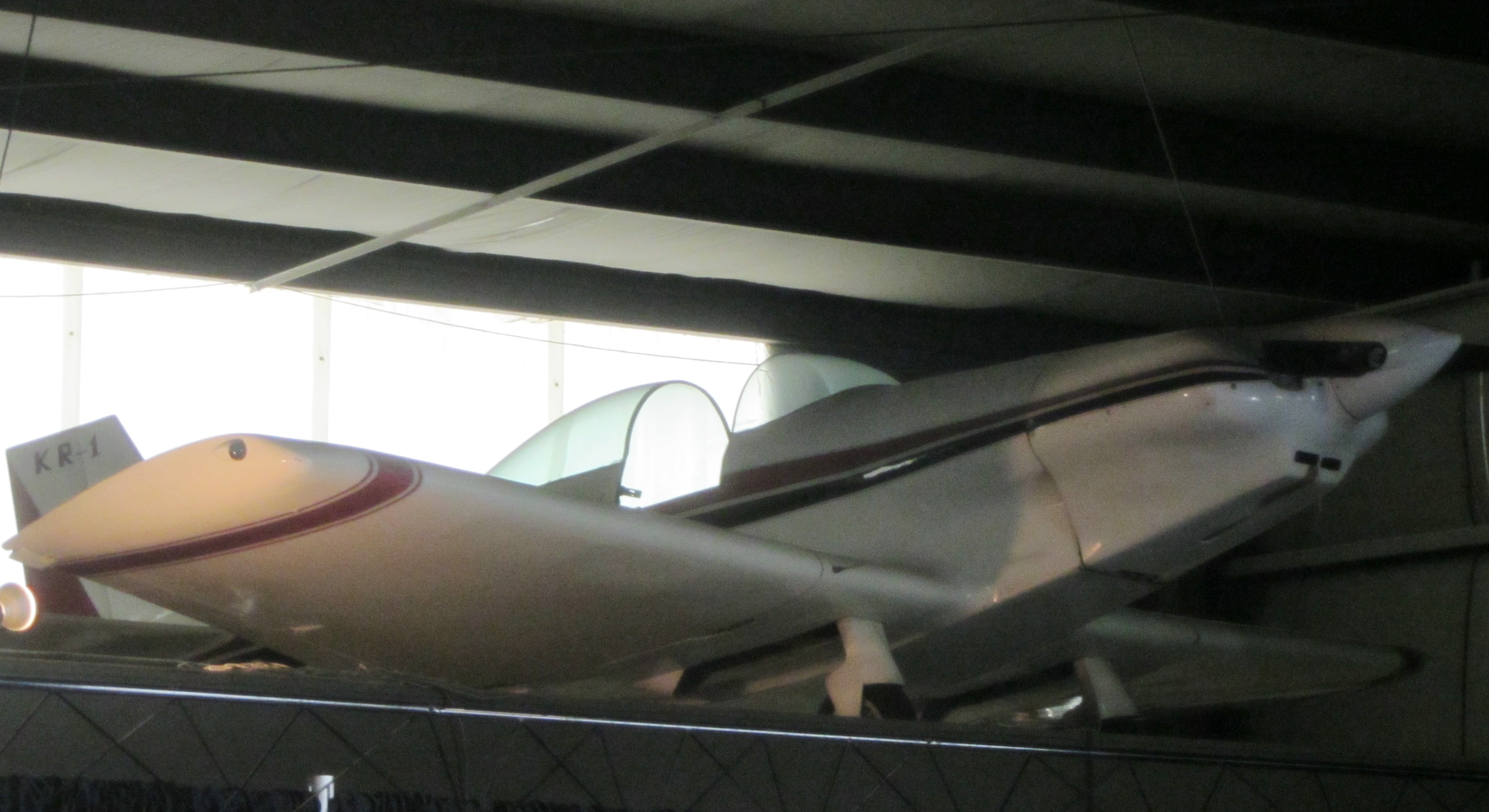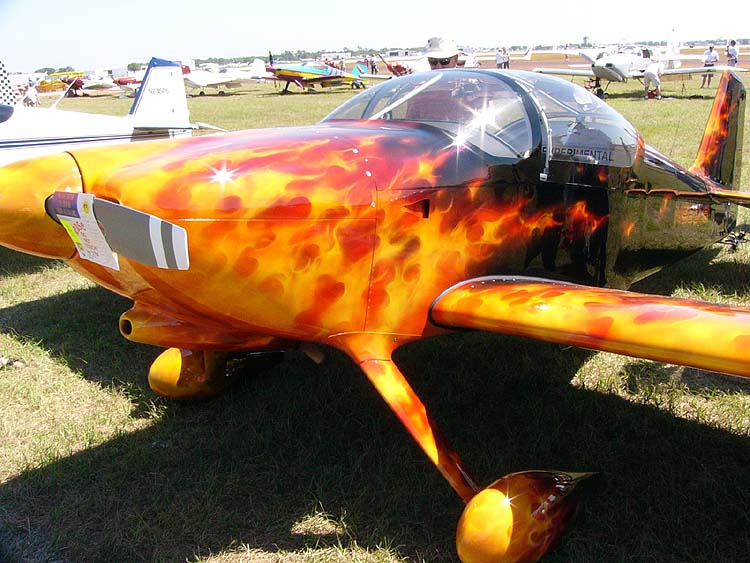|
Van's Aircraft RV-3
The Van's RV-3 is a single-seat, single-engine, low-wing kit aircraft sold by Van's Aircraft.Vandermeullen, Richard: ''2012 Kit Aircraft Buyer's Guide'', Kitplanes, Volume 28, Number 12, December 2011, page 74. Belvoir Publications. Unlike many other aircraft in the RV line, the RV-3 is only available as a tail-wheel equipped aircraft, although it is possible that some may have been completed by builders as nose-wheel versions. The RV-3 is the genesis design for the rest of the RV series, all which strongly resemble the RV-3. The RV-4 was originally developed as a two-seat RV-3. Development The architect of the line of Van's aircraft, Richard VanGrunsven, designed the RV-3 in the late 1960s after experience flying the Stits Playboy amateur-built aircraft. The RV-3 started out as an attempt to maintain the Playboy's layout and concept but to improve it in every regard. The RV-3 was designed to have light handling, aerobatic capabilities, fast cruise speeds, and short field ... [...More Info...] [...Related Items...] OR: [Wikipedia] [Google] [Baidu] |
Home-built Aircraft
Homebuilt aircraft, also known as amateur-built aircraft or kit planes, are constructed by persons for whom this is not a professional activity. These aircraft may be constructed from "scratch", from plans, or from assembly kits.Armstrong, Kenneth: ''Choosing Your Homebuilt - the one you will finish and fly! Second Edition'', pp. 39–52. Butterfield Press, 1993. Peter M Bowers: ''Guide to Homebuilts - Ninth Edition''. TAB Books, Blue Ridge Summit PA, 1984. Overview In the United States, Brazil, Australia, New Zealand and South Africa, homebuilt aircraft may be licensed Experimental under FAA or similar local regulations. With some limitations, the builder(s) of the aircraft must have done it for their own education and recreation rather than for profit. In the U.S., the primary builder can also apply for a repairman's certificate for that airframe. The repairman's certificate allows the holder to perform and sign off on most of the maintenance, repairs, and inspections themse ... [...More Info...] [...Related Items...] OR: [Wikipedia] [Google] [Baidu] |
Flap (aircraft)
A flap is a high-lift device used to reduce the stalling speed of an aircraft wing at a given weight. Flaps are usually mounted on the wing trailing edges of a fixed-wing aircraft. Flaps are used to reduce the take-off distance and the landing distance. Flaps also cause an increase in drag so they are retracted when not needed. The flaps installed on most aircraft are partial-span flaps; spanwise from near the wing root to the inboard end of the ailerons. When partial-span flaps are extended they alter the spanwise lift distribution on the wing by causing the inboard half of the wing to supply an increased proportion of the lift, and the outboard half to supply a reduced proportion of the lift. Reducing the proportion of the lift supplied by the outboard half of the wing is accompanied by a reduction in the angle of attack on the outboard half. This is beneficial because it increases the margin above the stall of the outboard half, maintaining aileron effectiveness and reduci ... [...More Info...] [...Related Items...] OR: [Wikipedia] [Google] [Baidu] |
Low-wing Aircraft
A monoplane is a fixed-wing aircraft configuration with a single mainplane, in contrast to a biplane or other types of multiplanes, which have multiple planes. A monoplane has inherently the highest efficiency and lowest drag of any wing configuration and is the simplest to build. However, during the early years of flight, these advantages were offset by its greater weight and lower manoeuvrability, making it relatively rare until the 1930s. Since then, the monoplane has been the most common form for a fixed-wing aircraft. Characteristics Support and weight The inherent efficiency of the monoplane is best achieved in the cantilever wing, which carries all structural forces internally. However, to fly at practical speeds the wing must be made thin, which requires a heavy structure to make it strong and stiff enough. External bracing can be used to improve structural efficiency, reducing weight and cost. For a wing of a given size, the weight reduction allows it to fly slower ... [...More Info...] [...Related Items...] OR: [Wikipedia] [Google] [Baidu] |
1970s United States Civil Utility Aircraft
Year 197 ( CXCVII) was a common year starting on Saturday (link will display the full calendar) of the Julian calendar. At the time, it was known as the Year of the Consulship of Magius and Rufinus (or, less frequently, year 950 ''Ab urbe condita''). The denomination 197 for this year has been used since the early medieval period, when the Anno Domini calendar era became the prevalent method in Europe for naming years. Events By place Roman Empire * February 19 – Battle of Lugdunum: Emperor Septimius Severus defeats the self-proclaimed emperor Clodius Albinus at Lugdunum (modern Lyon). Albinus commits suicide; legionaries sack the town. * Septimius Severus returns to Rome and has about 30 of Albinus's supporters in the Senate executed. After his victory he declares himself the adopted son of the late Marcus Aurelius. * Septimius Severus forms new naval units, manning all the triremes in Italy with heavily armed troops for war in the East. His soldiers embark on an ... [...More Info...] [...Related Items...] OR: [Wikipedia] [Google] [Baidu] |
Homebuilt Aircraft
Homebuilt aircraft, also known as amateur-built aircraft or kit planes, are constructed by persons for whom this is not a professional activity. These aircraft may be constructed from "scratch", from plans, or from assembly kits.Armstrong, Kenneth: ''Choosing Your Homebuilt - the one you will finish and fly! Second Edition'', pp. 39–52. Butterfield Press, 1993. Peter M Bowers: ''Guide to Homebuilts - Ninth Edition''. TAB Books, Blue Ridge Summit PA, 1984. Overview In the United States, Brazil, Australia, New Zealand and South Africa, homebuilt aircraft may be licensed Experimental under FAA or similar local regulations. With some limitations, the builder(s) of the aircraft must have done it for their own education and recreation rather than for profit. In the U.S., the primary builder can also apply for a repairman's certificate for that airframe. The repairman's certificate allows the holder to perform and sign off on most of the maintenance, repairs, and inspections themsel ... [...More Info...] [...Related Items...] OR: [Wikipedia] [Google] [Baidu] |
Rand Robinson KR-1
The Rand Robinson KR-1 is a single-seat, single-engine sport aircraft designed in the United States in the early 1970s and marketed for homebuilding.Grimstead, Bo"Flight Review: The Rand KR-2" September 13, 2010, ''Kitplanes,'' retrieved November 13, 2020Taylor 1989, p.757Markowski 1979, p.286 A two-seat version is marketed as the KR-2. It is a low-wing cantilever monoplane of conventional design with an enclosed cockpit and tailwheel undercarriage.''Jane's All the World's Aircraft 1987–88'', p.696 As originally designed, the main undercarriage units of the KR-1 and basic KR-2 were manually retractable, folding backwards into the wings, while the KR-2T tandem-seat version had fixed tricycle undercarriage.''Jane's All the World's Aircraft 1987–88'', p.696–97 However, some builders choose fixed tailwheel or even fixed tricycle undercarriage for KR-1s and KR-2s.Cox 1995, p.22 Kits for the KR-1, KR-2 and KR-2S are supplied by nVAero of Mission Viejo, California/ Corona, Cali ... [...More Info...] [...Related Items...] OR: [Wikipedia] [Google] [Baidu] |
Aircraft Technologies Acro 1
The Aircraft Technologies Acro 1 is an American aerobatic homebuilt aircraft that was designed by Fred Meyer and produced by Aircraft Technologies of Lilburn, Georgia. When it was available the aircraft was supplied as a kit or in the form of plans for amateur construction.Purdy, Don: ''AeroCrafter - Homebuilt Aircraft Sourcebook, Fifth Edition'', page 109. BAI Communications, 15 July 1998. Neither plans nor kits are available anymore and the aircraft is out of production. Design and development Designed as a high-speed, long-range cross country and aerobatic aircraft, the Acro 1 features a cantilever low-wing, a single-seat enclosed cockpit under a bubble canopy, fixed conventional landing gear and a single engine in tractor configuration. The aircraft is stressed to +/-15 g. The aircraft is made from graphite and fiberglass composites. Its span wing has a wing area of and has no flaps. The acceptable power range is and the standard engine used is the Lycoming IO-360 p ... [...More Info...] [...Related Items...] OR: [Wikipedia] [Google] [Baidu] |
Van's Aircraft RV-6
The Van's RV-6 and RV-6A are two-seat, single-engine, low-wing homebuilt airplanes sold in kit form by Van's Aircraft. The RV-6 is the tail-wheel equipped version while the RV-6A features a nose-wheel. The RV-6 was the first aircraft in the popular Van's RV series to feature side-by-side seating and the first to offer a nosewheel option. It was first flown in 1985. Over 2700 kits have been completed and flown. The RV-6 and RV-6A were replaced by the similar, but improved, RV-7 in 2001. Kit components are still available to allow builders to complete RV-6s under construction, but no new complete kits are available. Development Van's Aircraft designer, Richard VanGrunsven, designed the RV-6 series as a two-seat side-by-side development of the RV-4, which was itself a development of the single seat RV-3. Market demand motivated VanGrunsven to design the RV-6 and offer it as an optional nosewheel design. The original two seater RV-4 has been a remarkable success, but ... [...More Info...] [...Related Items...] OR: [Wikipedia] [Google] [Baidu] |
EAA AirVenture Museum
The EAA Aviation Museum, formerly the EAA AirVenture Museum (or Air Adventure Museum), is a museum dedicated to the preservation and display of historic and experimental aircraft as well as antiques, classics, and warbirds. The museum is located in Oshkosh, Wisconsin, United States, adjacent to Wittman Regional Airport, home of the museum's sponsoring organization, the Experimental Aircraft Association (EAA), and the organization's EAA AirVenture Oshkosh event (the world's biggest fly-in and airshow) that takes place in late July/early August. With over 200 aircraft, indoors and outdoors, and other exhibits and activities (including occasional aircraft rides nearby), the AirVenture Museum is a key tourist attraction in Oshkosh and is a center of activity throughout the AirVenture fly-in and airshow each summer. The museum is open year-round with the exception of a few holidays. History EAA founder Paul Poberezny proposed the idea of the EAA Air Museum-Air Education center ... [...More Info...] [...Related Items...] OR: [Wikipedia] [Google] [Baidu] |







